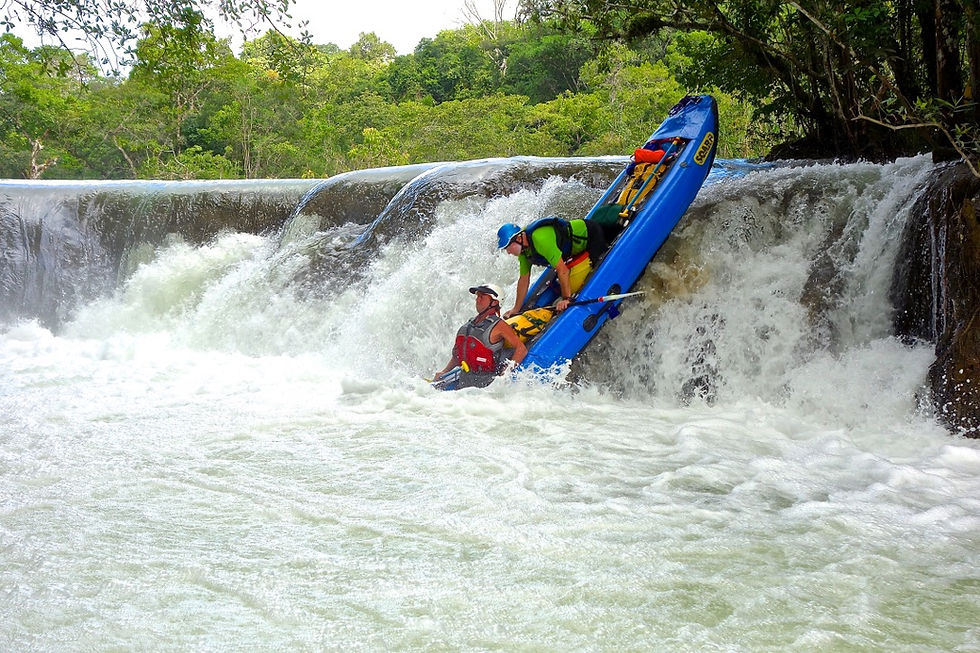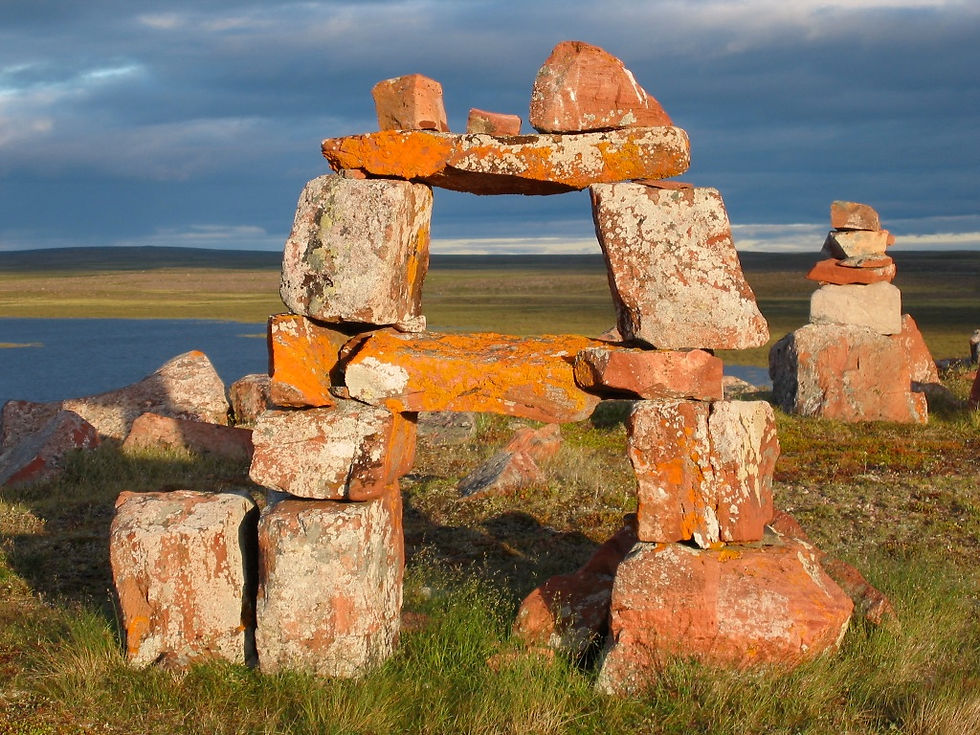FAQ QUESTION
Some friends and I are planning to canoe a remote river in northern Canada. We’ve paddled a lot of local rivers here in Michigan, and we’ve been to the Boundary Waters several times. We haven’t had any formal canoe training, but we read a lot and paddle a lot. And we’re not hot dogs! We respect the river and don’t take chances. I think we’re ready to make our first big trip.
Nonetheless, I have a deep fear that we’ll screw up and paddle over a falls or drown in a rapid. I’ve studied my maps and marked every danger. If there’s any doubt, we’ll line or portage. But I’m still worried that I might die on this canoe trip. In fact, I’m thinking of increasing my life insurance in case I don’t come back. I don’t mean to sound pessimistic, because I’m really very optimistic and excited about doing this trip. But deep down, I’m afraid to go. Is this normal?
Fearful Fran

Rio Lacnja River, Chiapas, Mexico. 16-foot SOAR inflatable canoe. Yes, they capsized! Cr. Larry Rice
Dear Fearful:
Rest easy; the fear (let’s call it “concern”) you express is perfectly normal. And healthy. It shows that beneath your tough outward appearance there’s a warmly beating heart. Rest assured that you are not alone! Every wilderness canoeist I know secretly admits some “trepidation” that his or her skills are inadequate to meet the challenge.

Kopka River, Ontario. Remains of an 18-foot Jensen racing canoe--WRONG boat for this river! The paddlers of this canoe were lucky to survive. The story is in my long out-of-print book, Canoeist's Q&A.
Note that it’s the experienced canoeists who worry most. Beginners seldom give the matter much thought. Why? Because it takes a fair amount of field experience to appreciate the dangers of a wild river, let alone learn what they are. How can you relate to the danger of swamping far from shore on a big lake, capsizing in ice cold water, or being caught in a strainer, if you’ve never capsized in dangerous water or observed someone who has?
Mild controllable fear is nature’s way of telling you to slow down and think before you act. At the other extreme is foolhardiness, and every whitewater club has members that qualify. I hope that none of your paddling friends are so inclined.
Dr. Bill Forgey, nationally known outdoorsman and author sums it up: “Somehow on long trips, the uncertainty of the next day’s travel, the food supply, the amount of time, all seem to gnaw at me--perhaps in many ways spoiling the trip. Why do I take these things so seriously? Perhaps I’m not cut out for wilderness travel. I asked Sigurd Olson one day about this. He laughed and said that he’d asked the same question to the noted Canadian explorer, Charles Camsell at the Explorer’s Club one day. Camsell replied that he’d spent most of his adult life exploring the bush and had been scared during nine-tenths of it.”
Some whitewater canoeists have a unique method of rating rapids. There are “one pee,” “two pee” and “three pee” rapids. “One pee” rates about Class II on the international scale; “three pee” earns a V or VI! On some western U.S. rivers, the stench of urine above difficult rapids is so strong that authorities have posted signs asking people to “do it in the water,” not on land.

Wilberforce falls, Hood River, Nunavut, Canada. Wilberforce drops 160 feet in one pitch then plummets powerfully through a three mile canyon. It is a MANDATORY portage! Note: Sue Harings and I were married on that "table rock" on river left. The story is in my flagship book, CANOEING WILD RIVERS, 5th Ed.
Again, your feelings are perfectly normal. I’m certain that you will not paddle over a falls or drown in a rapid this summer. Why? Because you are a skilled paddler, you’ve done your homework and you know your limitations. Most important, you respect the river and know that you can’t beat nature at her own game.

An Inukshuk ("man likeness") - a welcome feature on arctic rivers. They function as location/direction "signs." Inuits sometimes built them to scare caribou towards hidden, awaiting hunters. Modern paddlers build them just for fun. Some Inukshuks contain notes (often placed inside a tin can) from paddlers who previously canoed the river. You are encouraged to add your own.
Have fun in Canada this summer. Spend your extra dollars on souvenirs, not life insurance. You’ll find good deals on beautiful native artwork in the northern communities.
-----------------------------
*My flagship book, CANOEING WILD RIVERS, 5th Edition, contains a wealth of advice on how to safely canoe difficult rivers.
My book CAMPING'S TOP SECRETS, 2022 revision, details practical camping tips and procedures that only the experts know. If you know just a few of these tricks, you'll be a hero to your friends!
*My teen book, JUSTIN CODY'S RACE TO SURVIVAL! mixes a fictional wilderness survival tale with practical outdoor tips everyone should know - a first for books of this type. Adults love it too!
My 90 minute video, THE FORGOTTEN SKILLS details the most important camping skills. If you can do them all you'll be a hero to your friends!
My long out-of-print book, CANOEIST'S Q&A (available as an e-book) contains 25 true scenarios (plus FAQ's) that define the wilderness canoeing and camping experience - a great training tool for those who go beyond the beaten path.
Comments